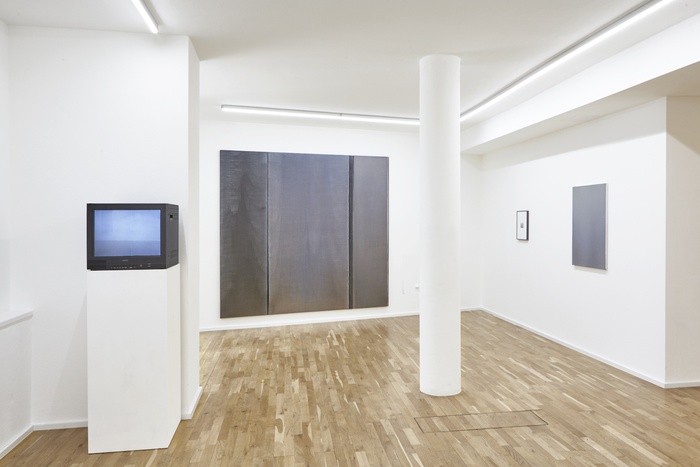
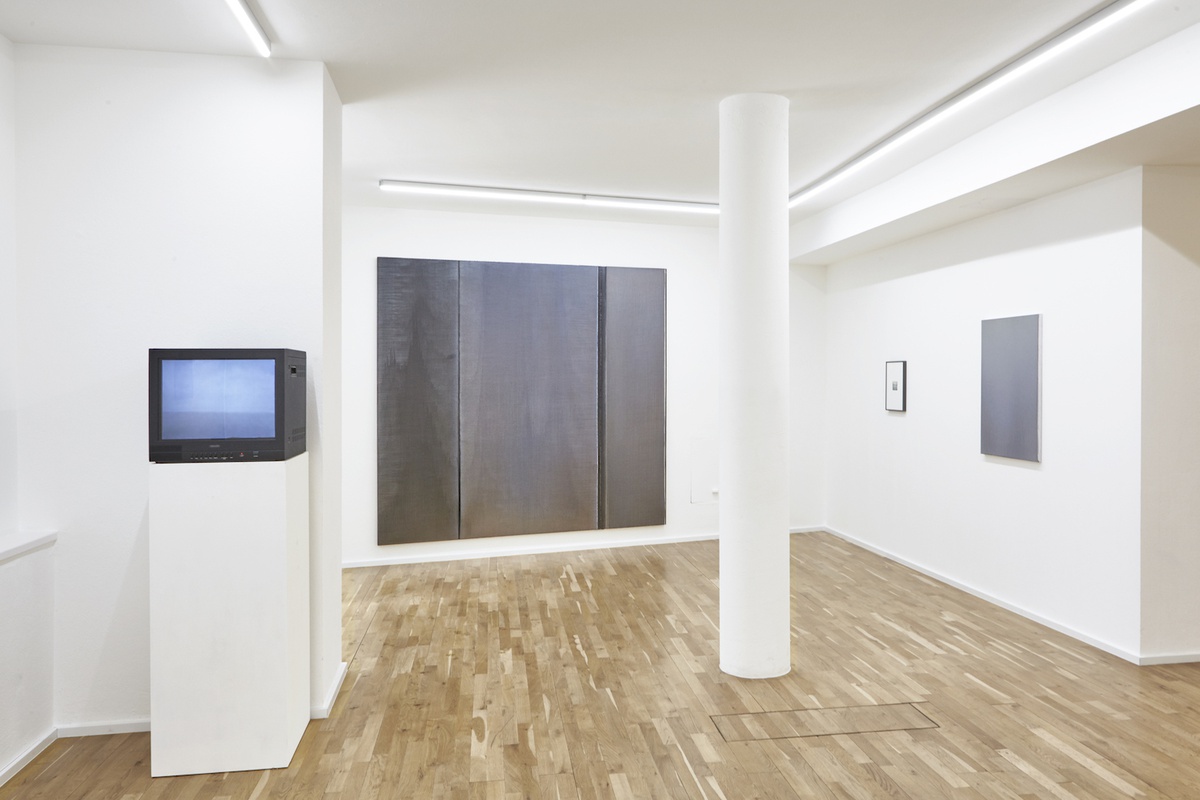

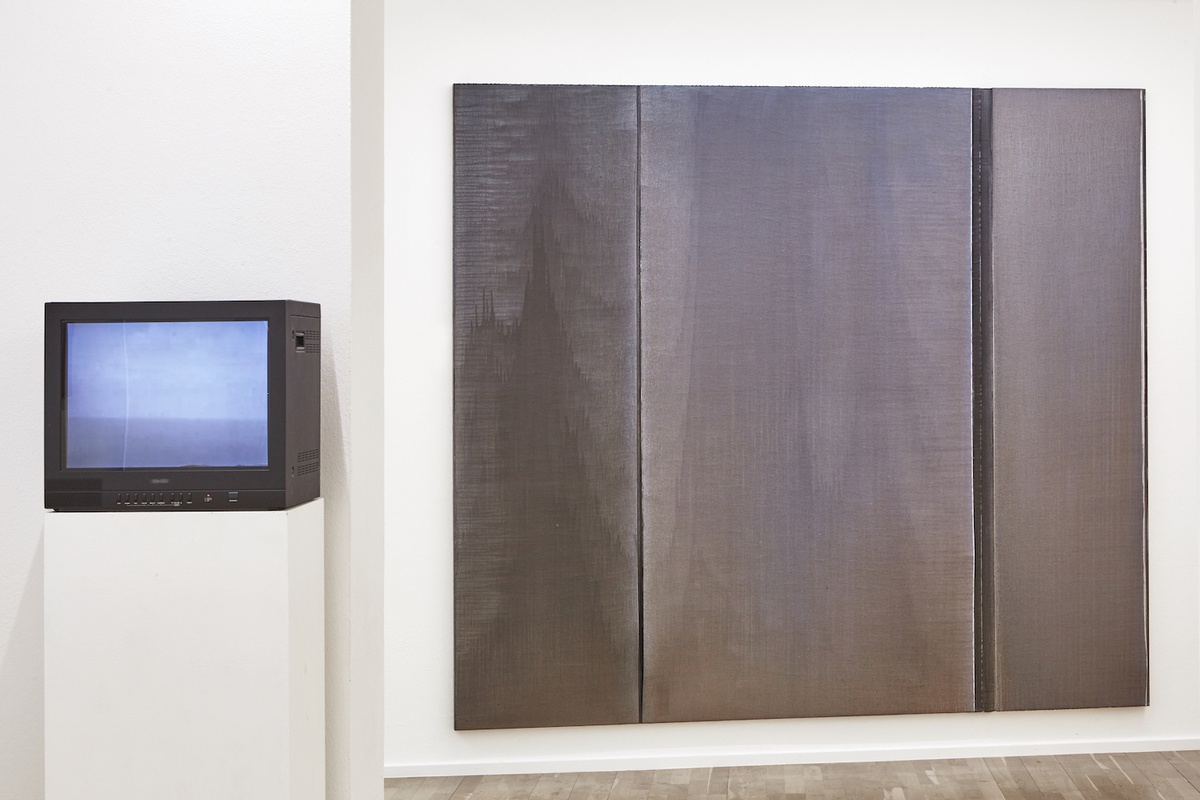
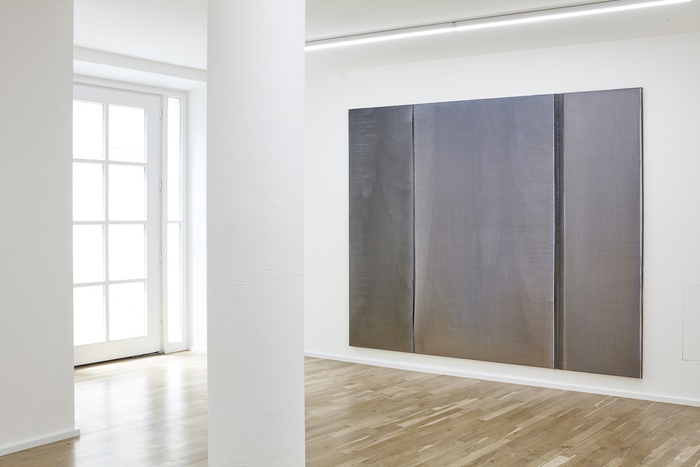
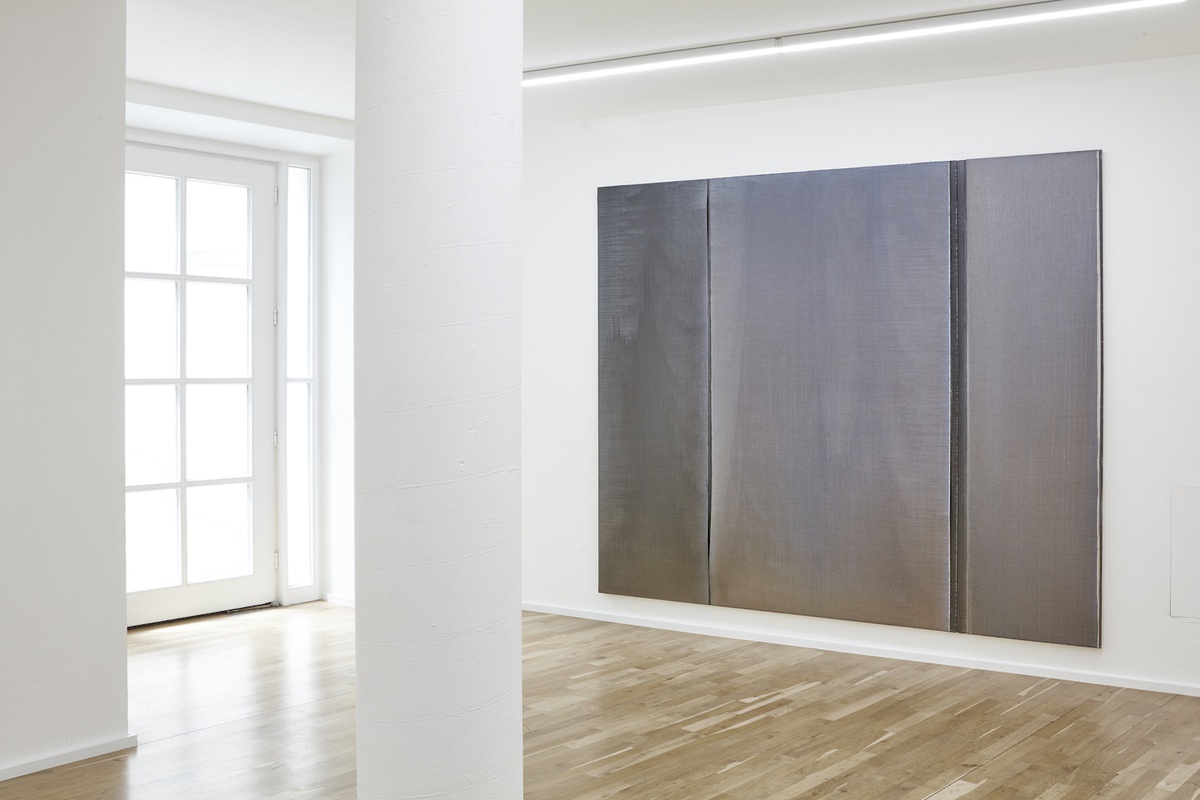

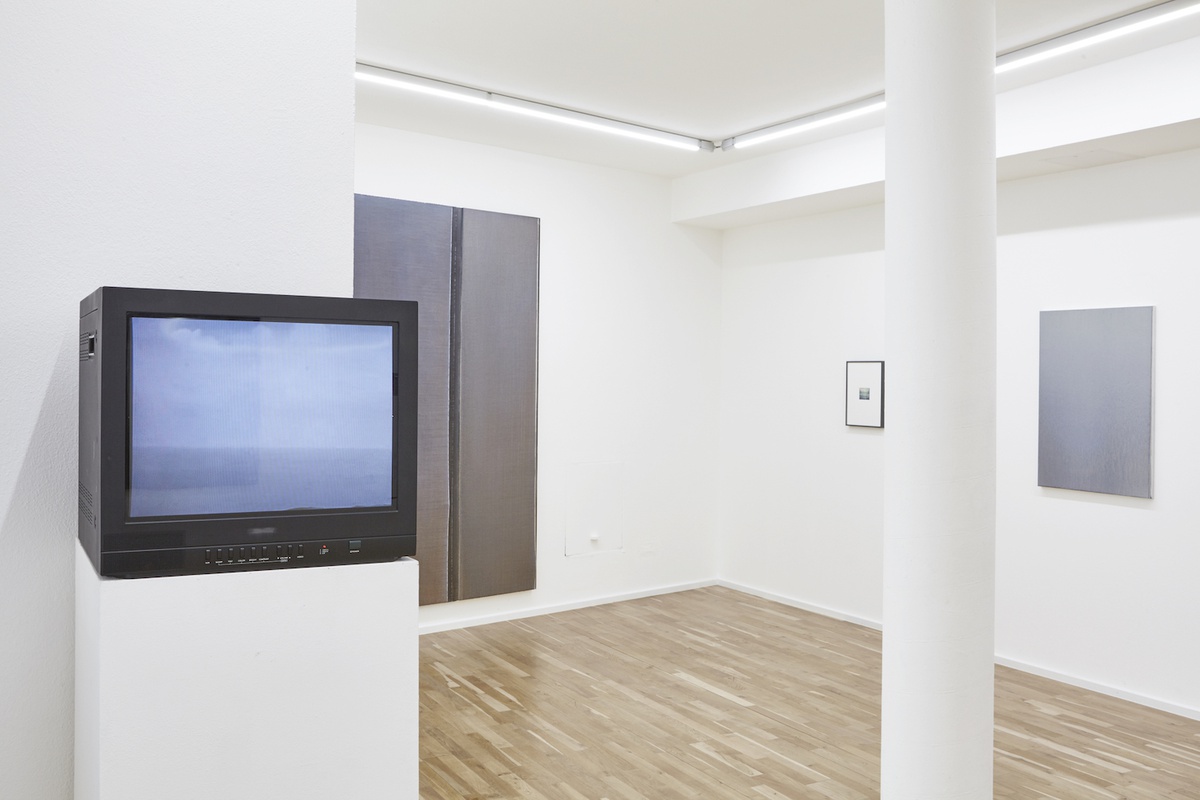
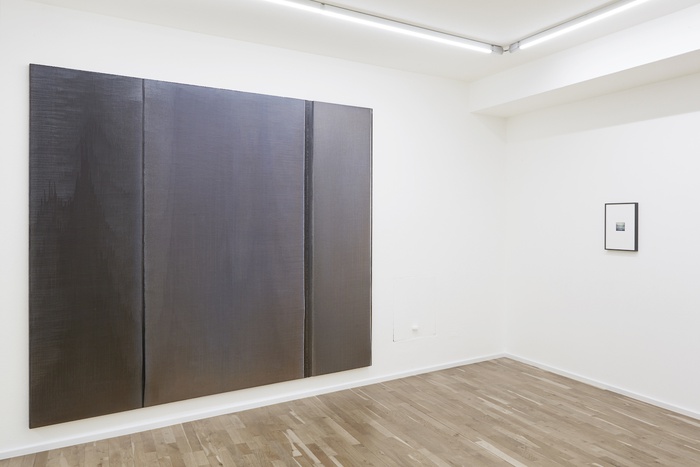
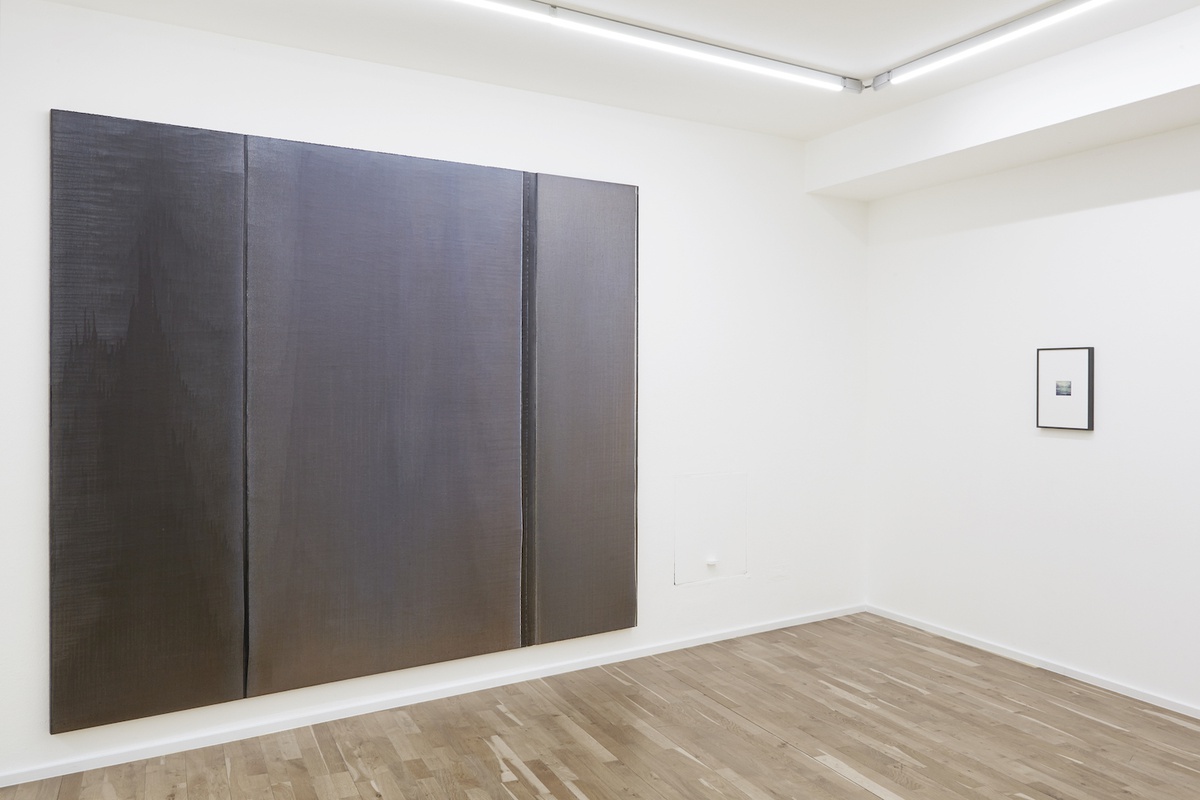
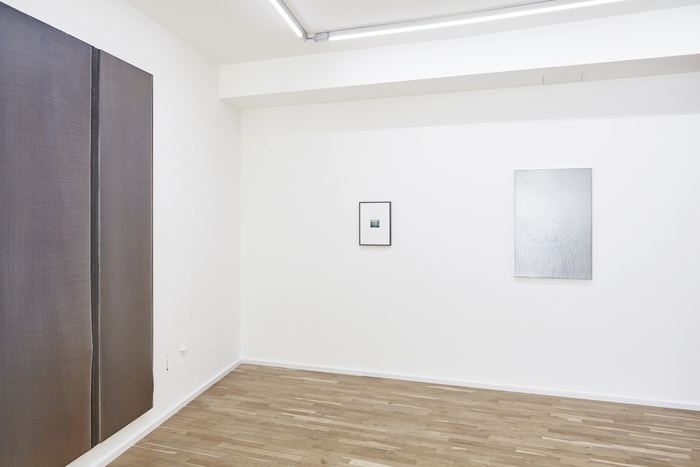
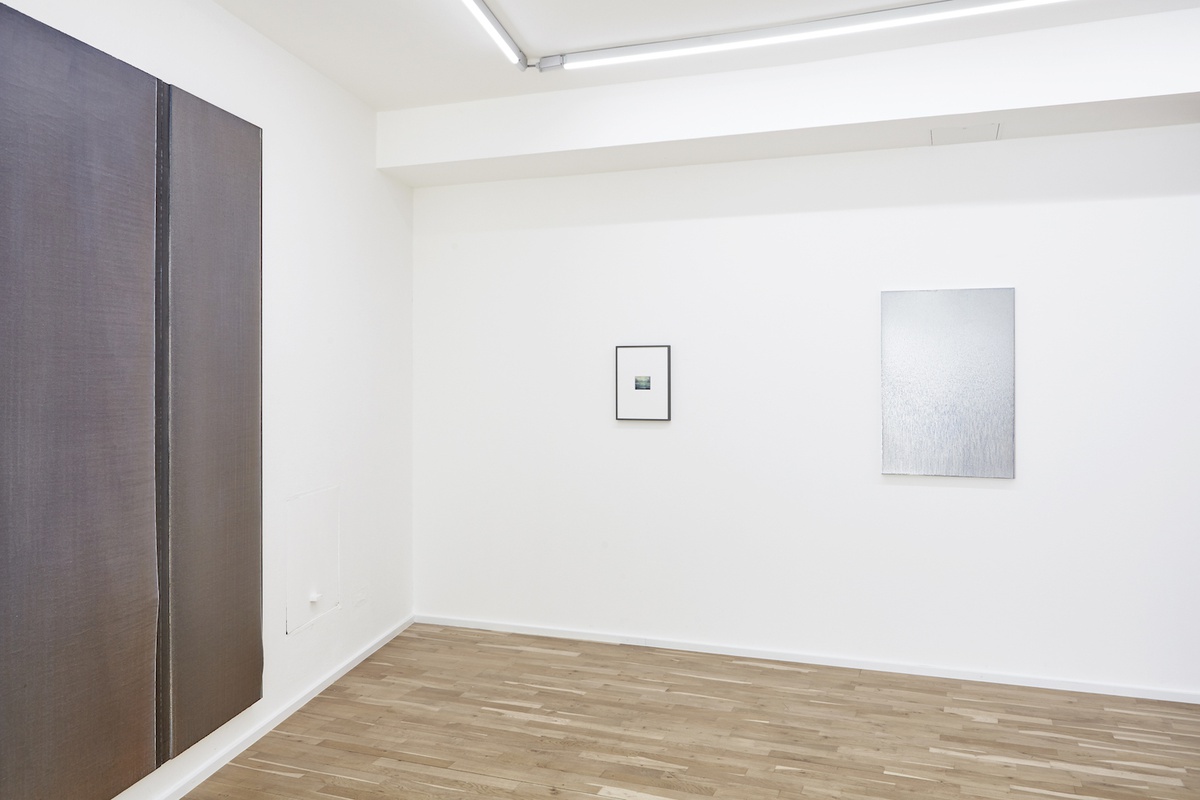

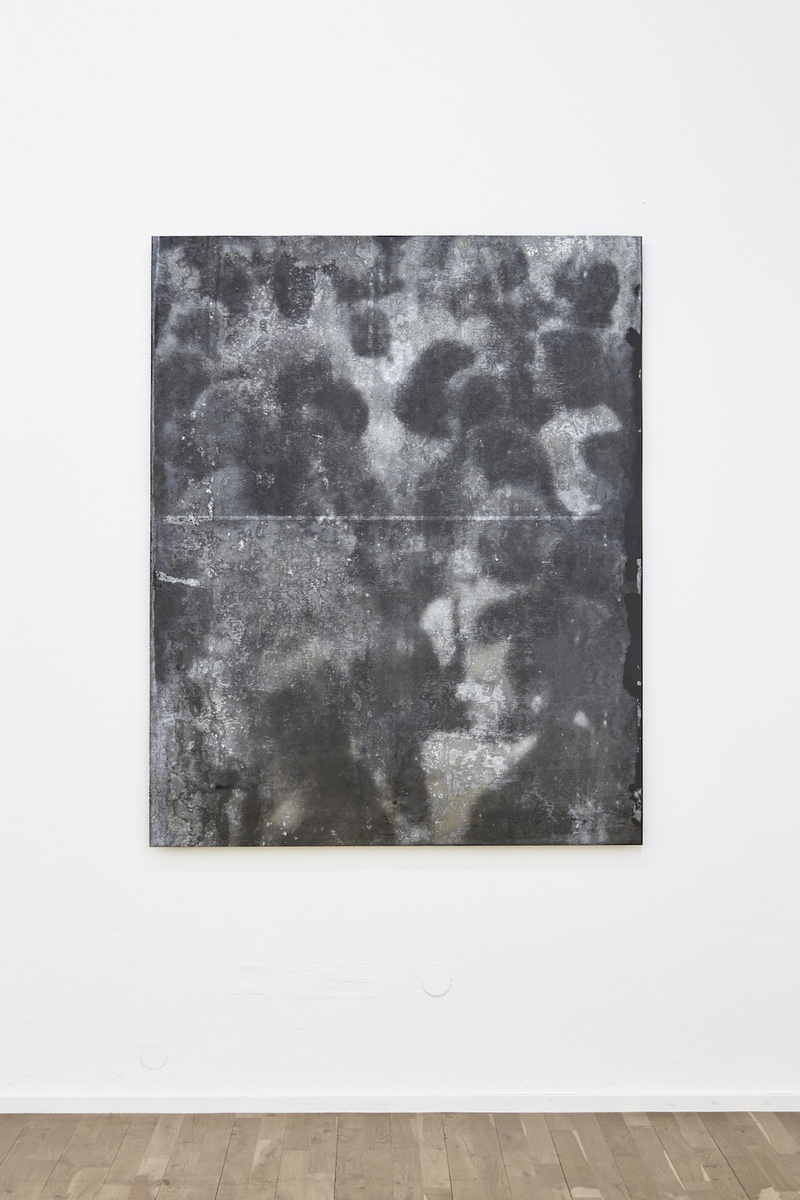
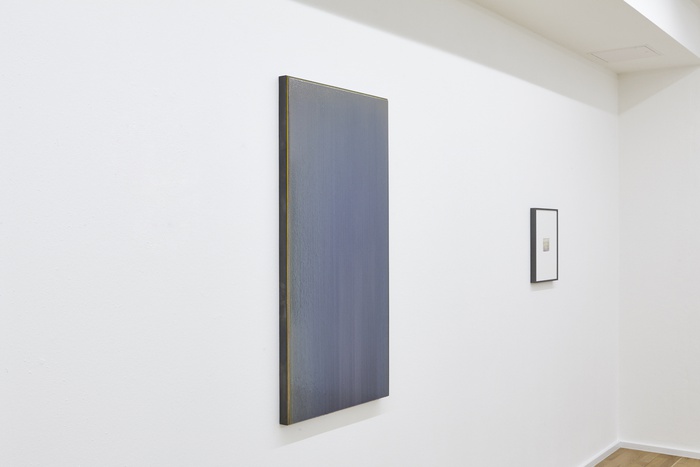
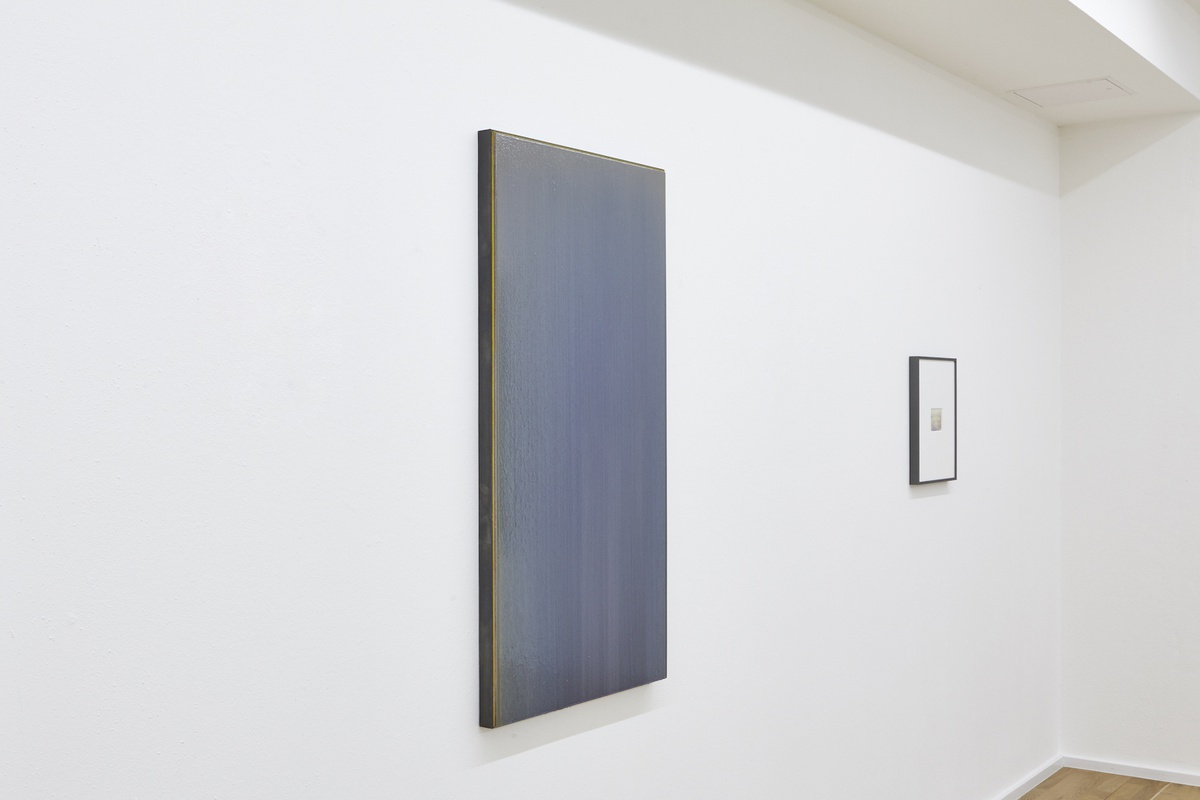
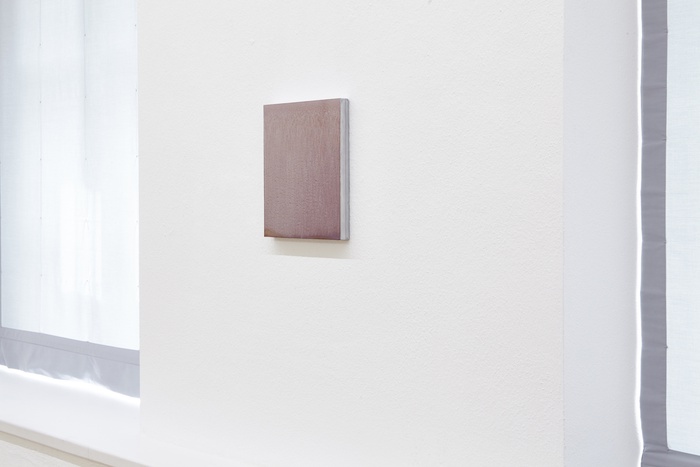

Exhibition view, Jahn und Jahn, München, 2021
Exhibition view, Jahn und Jahn, München, 2021
Exhibition view, Jahn und Jahn, München, 2021
Exhibition view, Jahn und Jahn, München, 2021
Exhibition view, Jahn und Jahn, München, 2021
Exhibition view, Jahn und Jahn, München, 2021
Exhibition view, Jahn und Jahn, München, 2021
Exhibition view, Jahn und Jahn, München, 2021
“As tradition accumulates, the painted image becomes an ideogram, a formula, to which the object portrayed is linked by contiguity. Recognition becomes instantaneous. We no longer see a picture. The ideogram needs to be deformed. The artist-innovator must impose a new form upon our perceptions, if we are to detect in a given thing those traits which went unnoticed the day before.“ Roman Jakobson, “On Realism in Art”, 1921
The exploration of the material constituents of a picture is a focal point in Erik Swars's artistic practice, and it is a compelling aspect for the aesthetic appreciation of his paintings. Presented as color fields, often taking the shape of an image object bordering on two and three-dimensionality, the large-scale all-over formats predominantly show just one thing: color on a surface. And that surface is paint.
The point of departure for Swars’s explorations in painting is the idea of the closed image body. The carrier material, framed and thereby outlined, stands in the tradition of European Renaissance panel painting. And yet the young artist puts himself in an entirely different line with his references to the thoughts that informed the works of post-1945 artists. Their main focus was seeking detachment from the modernist conventions of understanding images. The allusions to the long-established artistic practices of the American expressionists and the color field painters, together with nods to the artists of the Neue Wilde movement feasibly outlines the referential framework in which Erik Swars operates with his compositions and diligently gauges the potentiality of painting.
Figuration and abstraction have played an equal part in his early works, where Swars experimented with figurative images on abstract foundations. In mid-size formats he vaguely alluded to figures and their relations. Given the gestural haziness of the black contours, the protagonists of these realist images remained largely symbolic in their stylistic ambiguity, with the monochrome background occasionally accentuated by a colorful frame; a counterpoint to the fragile gouache drawings. Over the last two years figurative allusions, narrative subjects and descriptive titles have gradually vanished from the works. What remains is the color field, now claiming the entire image space. As part of this process, Swars has abandoned canvas as a carrier medium and begun to experiment with other materials.
What started as an experiment might be the beginning of an “exit from the picture” (Laszlo Glozer) taking place at the borders between art forms such as object, photography, and installation, where the coherence of perspective and space within a picture and respectively the composition of an installation are put into question. What do I paint on? What are the characteristics of the texture, what are the properties of binder and pigment? How will the paint bleed into the surface? And what happens in the process of applying paint as an abstracted gesture?
Instead of using conventional canvas, Swars has turned to Alu-PE as a medium in the last two years. Alu-PE is a thin sheet material used in the packaging industry, characterized by unique surface properties. Tear-resistant, smooth and without structure, it will not absorb any types of paint. The binder cannot diffuse into the medium, it remains fixed unaltered on top of the sheet. The plastic elasticity and the luster of the material reflect the layer of paint and the surrounding space. These composite sheets are an example par excellence for the application of an utterly contemporary material. Stretched onto the frame and fastened on the back, the sheets fall in a round arc that marks the lower edge of the painting, yet they remain open to the right and left, so that the frame is not hidden beneath the material.
In his essay „The Work of Art in the Age of Mechanical Reproduction“ (1935) Walter Benjamin argued that „the uniqueness of a work of art is inseparable from its being imbedded in the fabric of tradition“, which was a reference to the technological advances that accompanied the beginning of modernity and the resulting changes in the modes of perception. In Swars’s work, we see a distinct attempt to balance a novel approach to materials with our aesthetic expectations and the canon of abstract painting. The spectrum of styles and materiality is expanded further by the inclusion of black and white photographs from the archive of the artist into the spatial arrangements. As such, we witness an exploration of the interrelations between surfaces in painting, photography, and space; an approach that Swars sees as an all-encompassing gesture. This expansion and extension of artistic practice must be conceived as a type of ongoing research. The issue of the delegitimization of imitation in the space of the paintings and installations remains far from settled.
Erik Swars (born 1988 in Zwenkau, lives in Leipzig) studied at the Leipzig Academy of Visual Arts (HGB) under Jochen Plogsties, at the Leipzig School of Design under Christian Weihrauch, at Tokyo Geidai University of Fine Arts under O JUN and finally at Burg Giebichenstein University of Art and Design Halle under Christine Triebsch, where he took his diploma.
Gwendolin Kremer („How and what are pictures made of?” Erik Swars's explorations in painting)